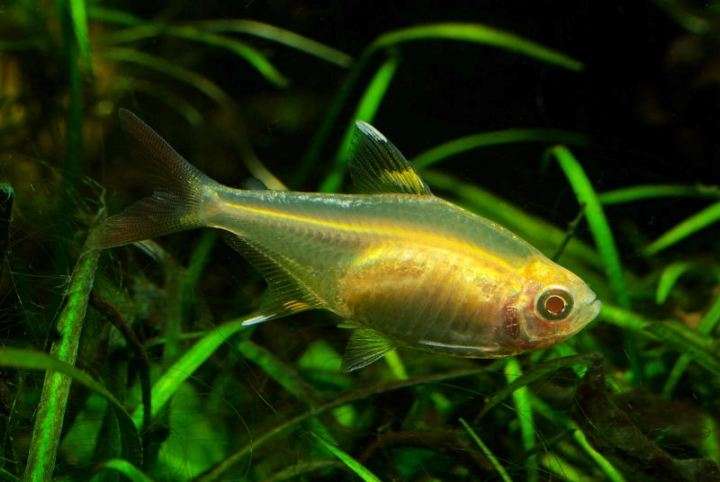
Size
It reaches a maximum length of around 5 cm (2.0 in).
Physical Characteristics and Behavior
A tetra with a deep body is the Pristella Tetra. A normal adult of this species will be around 1 3/4 inches (4.5 cm) long, and they can survive for 4-5 years or longer. Its tail is red, and its body is silvery to yellow with a large patch on the dorsal and anal fins. The dorsal and anal fins begin with a yellow stripe, change to a black bar, and finally end in a white tip. There are numerous visual effects in this quartet.
Care and Keeping as Pet

- Water Conditions
They are frequently discovered in the salty coastal waters. They prefer environments with common illumination and access to water. The pH will be between 6.0 and 8.0 and the hardness will be between 2.0- and 30.0 degrees relative humidity in the range of 74.0 to 82.0 degrees Fahrenheit (23.3 to 27.8 degrees Celsius).
- Care
The maintenance of Pristella tetra is relatively simple (as long as you understand their core needs). They are tough and durable tank inhabitants since they are designed to resist shifting environmental conditions. If you want these freshwater fish to flourish, you must always adhere to some predetermined rules. Here are some crucial pointers you shouldn’t overlook!
- Tank Size
A tank with at least 10 gallons is necessary for a small group of pristella tetras to be healthy. However, if at all possible, we advise increasing that minimum to 15 to 20 gallons. Pristella tetras are schooling fish that are energetic. They frequently travel in groups and investigate their surroundings together. Despite the fact that they could be small on their own, you need to make room for a group of at least six.
- Diet
Pristella tetras don’t have particular food preferences either. They are dependable omnivores who will consume almost anything you give them! The best option is to make commercial flakes or pellets the foundation of their diet. Choose high-quality meals with a balanced diet. You can sporadically offer high-protein snacks as well. In the wild, X-ray tetras frequently hunt for little insects and insect larvae that they come across on the surface. Discovering that elusive nibble in its native environment is like finding it with high-protein snacks! You can provide some brine shrimp that have just hatched. It also works with frozen or freeze-dried products. Try providing bloodworms and other edibles that are comparable.
- Tank Companions
Prismella tetras can get along nicely with many other freshwater tank residents, including fish of different species. You must make sure that any tank mates you join to the community have a similar temperament because you are a peaceful species. In the presence of aggressive or even semi-aggressive species, these fish will not survive. They are a prime target for well-known aggressors like cichlids because of their laid-back disposition. Also, it’s advisable to avoid catching bigger fish. Friendly giants could even mistake them for food. Keep fish in the community at around the same size.
The following fish make excellent tank mates for pristella tetras:
- Pencil Fish
- Small Types Of Rasboras
- Guppy Fish
- Molly Fish
- Platy Fish
- Small Tetras (like the ember)
- Apistogramma
- Most Loaches
Table





